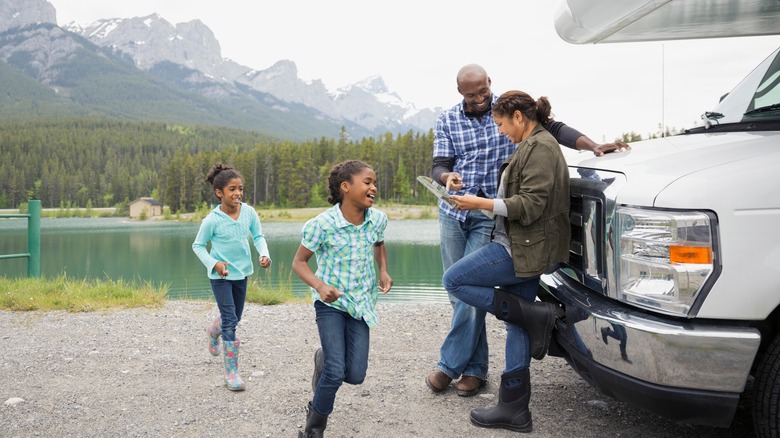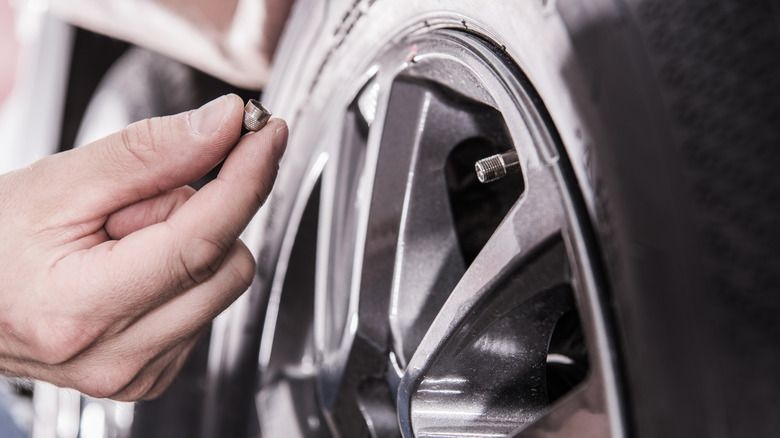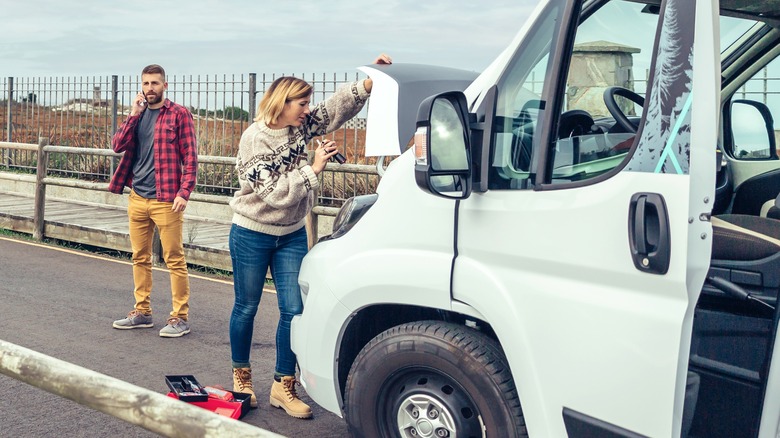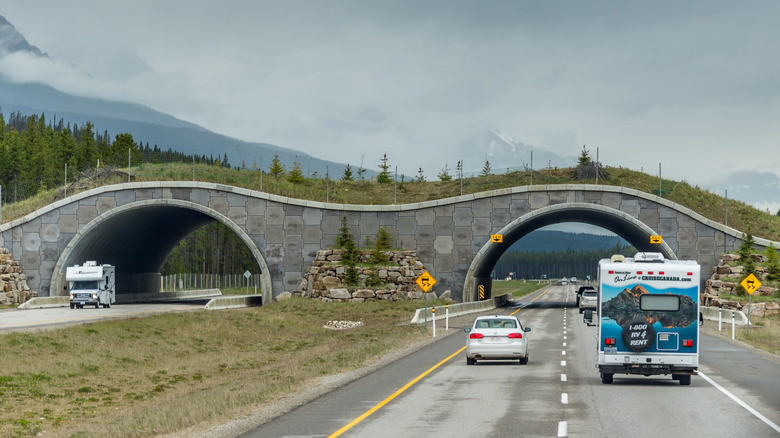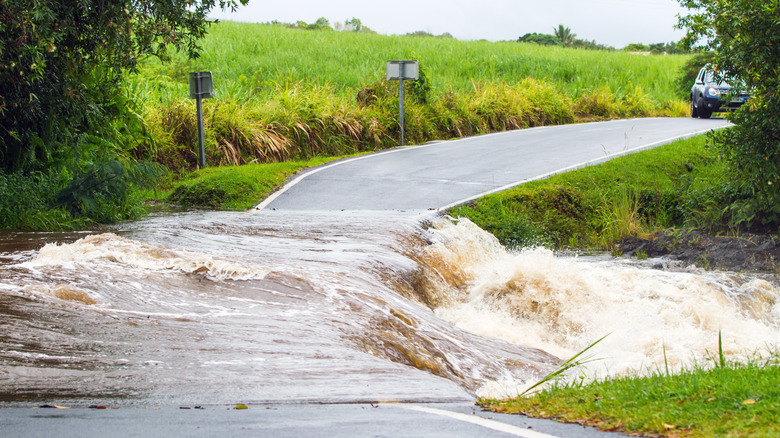Tips For Staying Safe During Your Next RV Adventure
We may receive a commission on purchases made from links.
Ah, the open road. Whether you're on a short-term getaway or it's your full-time setup, the RV lifestyle offers a freedom unlike any other. You have all the best comforts of home but the ability to move about as you please. Like any good adventure, though, the more miles you put on the road, the more issues will inevitably crop up. A handful of safety measures can ensure you have a smooth trip and stay prepared for whatever comes your way.
One of the best moves you can make, hands down, is to schedule routine maintenance appointments for oil changes and tire rotations, along with preventative measures like brake checks and engine inspections. These financial investments will save you time, stress, and money by identifying minor problems before they become major issues. Plus, you'll have peace of mind knowing you're doing everything you can to stay safe on the road.
Create a safety checklist
Before your road trip, create a pre-departure checklist, including checking the gas, tire pressure, and fluid levels. Inside the cabin, make a note to secure loose items and have the proper documentation in the RV, like proof of registration or a special license (if required). To make sure you're not forgetting anything, download the Ultimate RV Checklist app. Make it a habit to go over the checklist each time you hit the road. Walk around the interior of the RV and do a perimeter check on the outside to make sure everything looks as it's supposed to.
You'll also want to practice the RV lifestyle ahead of time. Spend a few weekends mastering some of the trickier maneuvers in an empty parking lot, like sharp turns and backing up in a straight line. On your dry runs, notice what items get tossed around inside the RV. Head to the hardware store for nets, locking shelf units, and cables to keep everything secure. The last thing you want is for an item to come flying out of a cabinet towards one of your passengers. It's better to iron out those kinks now.
Pack emergency items
One staple to always have on hand is an emergency first-aid kit for road trips. If an injury or an accident happens in a remote location, you'll need the basics until you can reach medical services in town. Keep a note in your phone reminding you where the emergency kit is located, so you don't have to go digging through your stuff in an emergency. Every so often, take an inventory and make sure you have enough essentials like bandages, pain relievers, gauze, tweezers, and antiseptic spray.
You'll need a first aid kit for your RV, too. Even when you do everything you can to mitigate problems on the road, you can still break down or end up with a flat tire. Depending on where you're parked, it could take several hours for roadside assistance to reach you. At night, mechanical issues are even trickier to deal with. Be sure to keep safety essentials on board and know exactly where they are, like a flashlight or headlamp, extra batteries, jumper cables, bottled water, and a fire extinguisher.
Expand your insurance coverage
One of the appeals of RV life is that it's an affordable way to live a life of adventure without breaking the bank. But one place not to skimp is insurance coverage. Check with your provider to see if they offer roadside assistance for RV-related issues and what the towing policy is. Many providers will offer up to 100 miles of towing for free, but that could still leave you high and dry if you plan to travel to remote locations.
If your insurance policy is lacking, don't be afraid to shop around. Good Sam Roadside Assistance is to RVers what AAA is to road-trip enthusiasts — an absolute staple to carry in your wallet. The company has 24/7 breakdown support and unlike other insurance companies, Good Sam's plans include unlimited towing to the nearest service center, tire delivery, and technicians on staff who specialize in RV services.
Take RV-friendly routes
Not all routes are created equal. A traditional GPS is great, but it won't tell you about size and height restrictions on roads and bridges. Plus, Google Maps and Apple Maps may not hold up in remote, forested, or mountainous areas. To avoid coverage issues, invest in an RV-specific GPS unit, like the Garmin RV 890. You can plug in your RV's size and it will adjust the route accordingly. It's not a bad idea to carry a paper map or a current trucker atlas as well.
If you do plan to rely on traditional GPS systems, make sure to write down your RV's height and width and keep it taped to the side of your dashboard. That way, when you see a low clearance sign you can do a quick reference check and make sure your RV will safely make it through overpasses, bridges, drive-through restaurants, and gas stations. Stick to main highways, as you're more likely to have a successful RV trip.
Be aware of weather conditions
Life on the road means you're going to encounter the best of what Mother Nature has to offer — and the worst. It's important to stay aware of the forecast in your area so you can plan accordingly and stop if you need to. The National Oceanic and Atmospheric Administration (NOAA) has a great app called the Storm Tracker, which gives you real-time weather updates and storm path predictions. You can see exactly what the weather is going to be like on your route, hour by hour. If there's an advisory in your range, you'll get an alert on your phone. This is a must if you're traveling through hurricane, tornado, and flood-prone areas.
If you're traveling with pets and plan to keep them inside the RV while you're out, place a sign on the window that says there are pets inside and to please call you if the RV is in some kind of danger. It's also a good idea to invest in a pet monitoring service. It will alert you if the temperature or humidity level exceeds a certain temperature in the RV, so you can come back and safely let them out. Some popular options in the RV community include the Waggle Pet Monitor and MarCELL. It's worth every penny to keep Fido safe.
